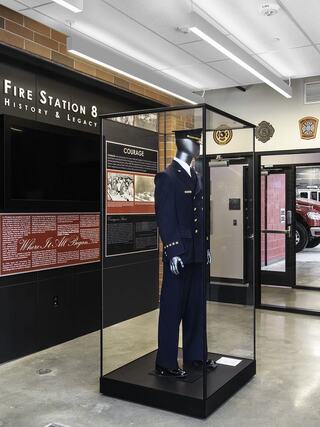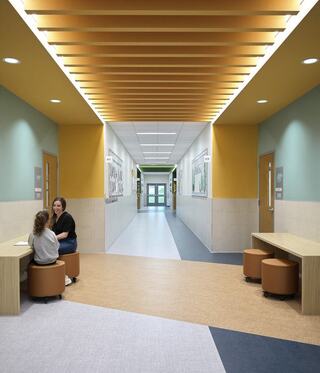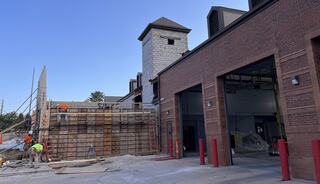
How Renovation Can Transform Public Safety Facilities
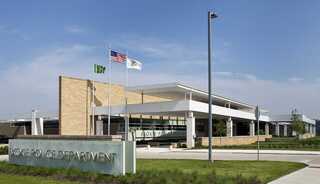
Building renovations offer benefits far beyond practicality and financially responsibility
By Joshua N. Mandell, AIA, NCARB, LEED AP BD+C, Vice President and Principal at FGMA
Public safety buildings are the backbone of emergency services — but many are aging, inefficient and out of step with modern building codes and today’s first responder needs. With construction costs skyrocketing, municipalities, counties and districts are turning to a construction alternative: strategic renovation. Across the U.S., fire protection districts, police departments, emergency service districts, sheriff’s offices and other public safety operators are choosing to upgrade and remodel rather than rebuild and relocate. It’s a practical decision rooted in both fiscal responsibility and demand for operational excellence.
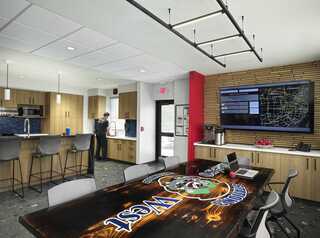
Metro West Fire House No. 3 Renovation
Choosing to Renovate Brings Lasting Benefits
Benefits are immediate as well as long-lasting. Renovating allows agencies to extend the life of existing infrastructure while bettering conditions for personnel and staying in the same locations and neighborhoods they’ve always called home. This includes safer apparatus bays and sally ports, contaminant control and zoning best practices, private living quarters and locker facilities that promote gender equity, wellness rooms and versatile fitness facilities — all of which contribute to improved morale and staff retention, not to mention mental and physical well-being.
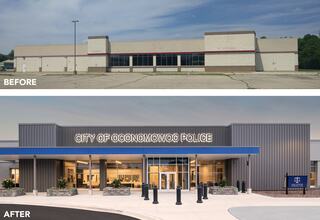
A former grocery store was transformed into the Oconomowoc, WI police facility and Emergency Operations Center.
Renovations Offer a Financially Responsible Option
Cost-effectiveness is a major driver of this remodeling revolution. Renovations typically cost less per square foot than new construction, especially when achieving reduced operational disruptions and quicker project timelines. Renovations typically do not require property acquisition. Facility owners can also take advantage of existing general and capital funding — supplemented by options for grants and low-rate USDA financing — to support renovation campaigns. Another option is adaptive reuse, wherein a municipality or district would acquire a “new-to-them” structure then add onto and/or renovate it — sometimes quite intensively — to bring it into alignment with the mission, vision and values of their agency.
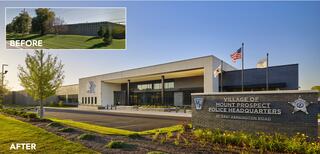
Mount Prospect Police Headquarters: an adaptive reuse of a former manufacturing/warehouse facility. The project received the Gold Award in the Officer Magazine Law Enforcement Design Awards program.
Improve Environmental Impact and User Health and Wellness
Sustainability plays a key role too. Upgraded systems — such as LED lighting, efficient HVAC units and solar arrays — reduce long-term energy costs and environmental impact, and preserve more budget for personnel, apparatus, training and upkeep. For fire engine houses and ambulance base stations especially, renovations are an opportunity to incorporate critical cancer risk reduction elements and advanced alerting systems, directly contributing to firefighter, EMT and paramedic safety through stopping unnecessary exposure, evacuating harmful off-gassing and particulate, and mitigating circulatory shock.
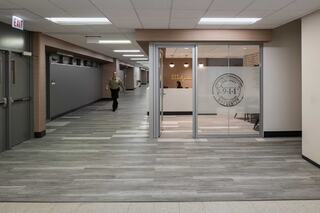
The Cook County 911 Dispatch Emergency Center renovation included enlarging their working space, incorporating a quiet room for staff to decompress and renovating the HVAC systems to enhance employee comfort.
Successful Projects Begin with Early Preparation
But it’s not all smooth sailing. Renovation projects come with their own set of perils and pitfalls, from hidden structural and infrastructure issues to staffing and supply chain delays and permitting red tape. Projects must be phased and scheduled in an intricate balance of access, action and ability to respond to calls for service. The solution? Rigorous upfront assessments, strong project management and a collaborative team of experienced architects, engineers and agency representatives to work hand-in-glove and realistically prepare for eventualities and challenges.
Taking the Next Step
By treating renovation as a pivotal, durable investment rather than a stopgap fix, departments and agencies are future-proofing their buildings while respecting their budgets and enhancing their communities.
For public safety operators seeking to modernize, now is the time to act. Start with a needs assessment and verification. Prioritize energy efficiency and staff wellness. Build a steering committee aligned with improving your facilities—and don't wait for failure to force your hand and limit your options.
Modern public safety requires modern facilities. Renovation isn’t just a practical consideration. It’s an essential tool.
Learn more about some of FGMA's renovation and adaptive reuse projects:
Oconomowoc Public Safety Facility
News & Insights
All Articles

St. Louis PK-12 Leader Emily Spindler Shares Insights on the Future of Ed Spaces

